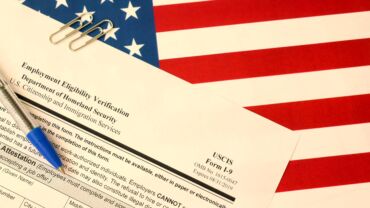It may be one of the oldest digital technologies in existence, but there’s no denying that the business and accounting worlds still heavily rely on email. The incredible power of email lies in the fact that it’s fast, free, and accessible to practically anyone. Unfortunately, this is also its greatest downfall, as the internet is now drowning in the weight of its most overused application.
Internet companies like Google reportedly block up to 100 million spam messages per day, and still our inboxes fill up. If you hope to stay productive in this environment, you’ll need to enact some advanced email management strategies.
5 ways accountants can manage email more efficiently
1. Develop a strict email schedule
The best way to ensure you don’t waste unnecessary time on emails is to set a strict schedule for checking them. The vast majority of workers check their email in an inconsistent and erratic manner, afraid they might miss something.
This results in time wasted reading spam, going back to old emails, and laboring over inconsequential replies. You should set aside one hour every morning (or whenever best suits your schedule) to read and reply to only the emails that matter. Add a 30-minute follow-up in the evening if necessary.
2. Be ruthless with spam emails
Despite the best efforts of email senders, spam is unavoidable, as shared email addresses inevitably end up in the wrong hands. While most people simply click and delete spam without thinking, those few seconds all add up. Spend a few minutes unsubscribing to repetitive spam and creating customized rules to delete spam-like messages. This will filter out the fluff and save you a lot of time in the long run.
3. Apply the 80/20 rule
The 80/20 rule, or Pareto Principle, dictates that 80% of consequences come from 20% of causes. This means that about 20% of your email will affect up to 80% of your business. Keep this in mind when you open your inbox: If you have 50 unread messages, quickly decide which 10 are the most important and tackle those first.
4. Create an organizational email system
Searching for the correct email is one of the biggest time-wasters and is entirely unnecessary with today’s email organization tools. Create rules to highlight subjects like audits or budgeting, categorize clients into color-coded groups, and label emails regarding specific projects or short-term goals. You’ll be amazed at how fast and easy it becomes to find exactly what you’re looking for when everything is properly labeled.
5. Use email templates
If you often find yourself writing similar messages or copying from previous emails, it might be time to create some templates. You should have email templates ready to go for new client introductions, invoice follow-ups, business referrals, or information requests.
Practice CS accounting software from Thomson Reuters integrates with your existing email software, helping you to quickly and easily create templates for all your time-and-billing requirements.
Improve your tax and accounting firm’s email management and productivity with Thomson Reuters
Thomson Reuters offers a wide range of accounting solutions for firms of all sizes, whether you’re a small accounting firm starting your journey or a large accounting firm with a sizeable staff. On our blog, you can find articles on topics like workplace wellness, productivity, and best practices. We offer quick answers to common tax questions and dive into more complex issues covering entrepreneurship, business strategy, and regulatory requirements.
You can also sign up for our free tax and accounting newsletter, Checkpoint newsstand, for a summary of the most important news sent to your inbox daily.










